Overview
The main interest in Dr. MacLellan's lab is to understand the molecular mechanisms that regulate cardiac failure and develop therapies to regenerate myocardium. His lab extensively uses genetic mouse models in an attempt to correlate molecular insights with whole organ physiology. The long-term goal of his research to develop stem cell and tissue engineering strategies to repair the heart.
Examples of Lab Work
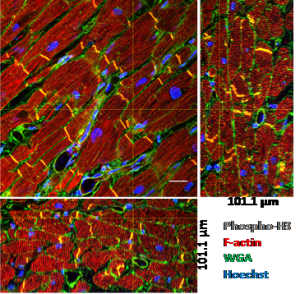 High-resolution 3D reconstruction of Normal Adult Human Heart
High-resolution 3D reconstruction of Normal Adult Human Heart
The hearts were stained for Filamentous Actin (F-actin, Red), glycosylated proteins (WGA, green), DNA (Hoechst, Blue), and mitosis marker phospho-H3 (grayscale).
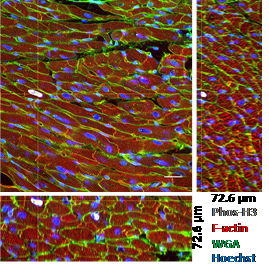 Transgenic Mouse Model
Transgenic Mouse Model
Transgenic mouse model with adult CM-specific activation of the Myconcogene results in mitotic activity in adult CMs. Mitotic marker phospho-H3 (white) is shown.
Human Heart Post LVAD
No proliferating CMs were observed, though a proliferative non-CM is shown. The second image is a Human Heart 4 years after LVAD (left ventricular assist device) placement. Post LVAD, no proliferating CMs were observed.
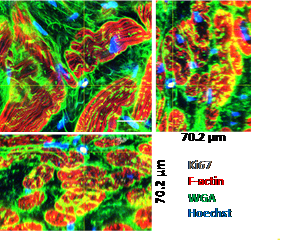
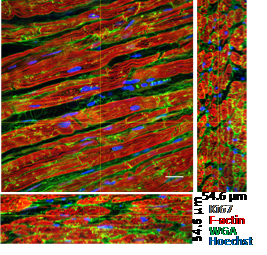
RESEARCH LEADERSHIP
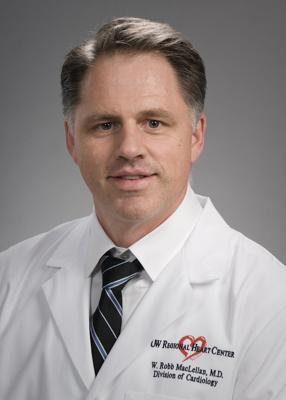
Principal Investigator
W. Robb MacLellan, MD
Division Head of Cardiology
Robert A. Bruce Endowed Chair in Cardiovascular Research
Professor of Medicine and Physiology



